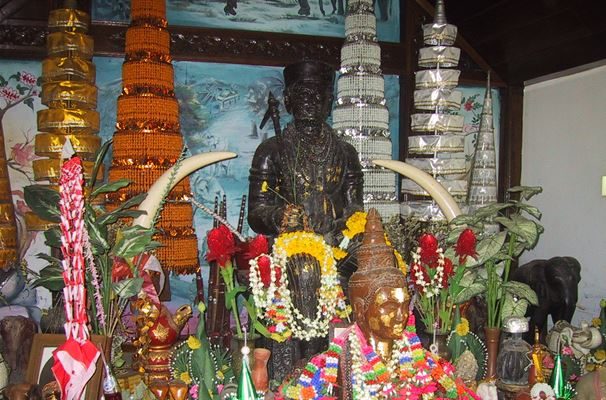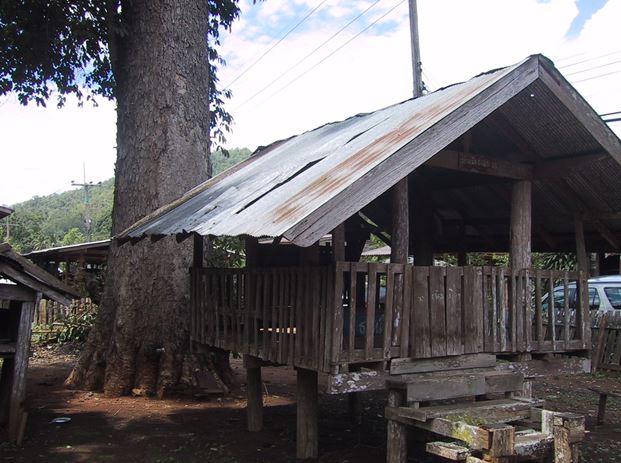In a recent post on New Mandala, Bangkok-based blogger Cod Satrusayang, explains why Thailand needs its king. Reviewing the turmoil of Thai modern history, Cod argues that the king has provided for a “constant presence throughout the turmoil.”
Since 1991 Thailand has had two military coups, one gigantic financial meltdown, an exiled prime minister, numerous street protests and a judiciary that acts in the best interest of itself. We have had floods and droughts, a sectarian insurgency, an international jewel scandal and numerous other proud accomplishments. Today one side claims to be the harbinger of democracy and liberty but has done little to promote either. We have another party, ironically called the Democrats, who despite their proud insistence at being the oldest political party has done nothing of worth or value in its long and elongated history.
So who is there to defend the poor? To serve their best interest? Who has been a constant presence of stability in a sea of political sewage? There can be only one answer.
I agree with Cod. A sense of continuity is important, especially when dealing with an entity as contrived as the modern nation.
But, as a number of commentators have pointed out, the continuity that Cod writes about is based on a highly simplified and selective narrative of the king’s presence in modern Thai history. Not that there is anything particularly unusual about that. National symbols are always highly simplified. Otherwise, they couldn’t cope with the expectations of their highly diverse audience. Many of these simplifications–Anzacs, Ho Chi Minh, Yorkshire pudding–don’t stand up to close scrutiny. The devil is very much in the detail.
Of course, what sets the Thai monarchy apart from these other national symbols is that its simplification is protected by draconian law. The king does not have to contend with the mischief of devilish detail. Some commentators tend to overstate the hegemonic effect of the lese majeste law, but there is no doubt that it is crucial in perpetuating a simplified narrative about the monarchy that, in more liberal circumstances, may well be unsustainable.
So what of continuity? Can it only be maintained by a symbolically constrained form of monarchy?
Or is there an alternative, that may even be palatable to royalists?
In fact, Cod’s simplified history may be less crucial than he suggests. A much more culturally embedded form of royal symbolism and continuity can be found in any city, town or village in Thailand.
The Thai landscape it literally littered with nodes of royalty. Wherever Thai people settle or conduct business, small palaces are erected for local lords and masters. In the north, where I have worked, their rustic palaces are staffed by servants and retainers. Tethering posts for the prince’s horses and elephants often surround these shrines, sometimes invisible to those who don’t understand that they are in the presence of royal power.
Spirit worship is a profoundly democratic dispersion of royal power. As I wrote in Thailand’s Political Peasants, this rather anarchistic model of royal power “has long been unattractive to ruling elites who have sought to centralise power and promote the royal or bureaucratic virtue of the capital.” Cod’s implicit claim that only the king can provide a sense of security and continuity is one version of this denial of alternative forms of royalty.
Fortunately, the Thai landscape is simply too productive of spiritual power for these denials to succeed.
Nevertheless, the Thai king’s simplified monopoly on continuity has been successful in one respect. Thailand’s landscape was also once littered with princes of a very earthly nature. Chiefs, princes and kings ruled over villages, towns and cities throughout the region. They had palaces, courts, retainers, wives, concubines, slaves, paddy fields, taxes and the power of life and death over their subjects: all the trappings of royalty. If universities had been built in their domains they certainly would have presided at graduation ceremonies.
The continuity that these royals represented has been all but erased. Through administrative incorporation and occasional brute force King Chulalongkorn ensured that alternative sites of royal power were erased from the Thai landscape. A fundamentally important part of Thailand’s royal culture was lost.
So, in the interests of royalist continuity, why not bring them back? Why should just one of Thailand’s many royal lineages have an exclusive hold on national continuity?
In a deep historical sense, Thai culture is profoundly sympathetic to the presence of many kings. As an initiative in royal decentralisation, why not restore the jao muang (local lords) to provide people throughout Thailand with a more localised sense of continuity and a more immediate connection to the nationwide network of royal power?
There must be plenty of descendants of these former royals who could be assessed for suitability. If not, provinces could manage selection processes: as we all know, the establishment of a royal lineage is arbitrary (it’s what comes after that matters).
Jao tambon may be going too far… but, on the other hand, One Tambon One Prince does have a certain ring to it.
In short, Cod is right. There is a natural fit between Thai culture and royalty. Thai culture needs its king.
So why only one?
 Facebook
Facebook  Twitter
Twitter  Soundcloud
Soundcloud  Youtube
Youtube  Rss
Rss 

